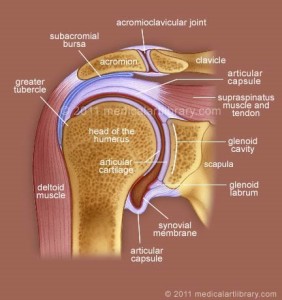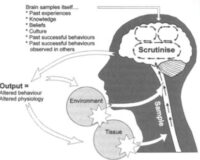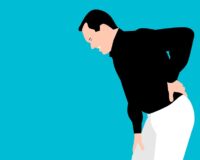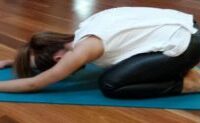
Shoulder Bursitis: Symptoms, Causes and an Evidenced Based Physiotherapy Program
Shoulder pain is a very common condition, affecting about 65% of people at some point in their lives. There can be many different causes for the pain, and there are many different structures around the shoulder joint that can become painful. Being the most mobile joint of the body, there are lots of things that can cause pain when it comes to the shoulder. One of the more common conditions is Sub-acromial bursitis, or shoulder bursitis, and we will look further at this topic now.
Brief Anatomy
The shoulder joint is also called the glenohumeral joint, and it is a ball and socket joint. It is formed between the humerus (arm bone) which acts as the ball, and part of the shoulder blade called the glenoid cavity, which acts as the socket. Its roof is made up of the acromion process and ligaments.
There are many different muscle attachments between the shoulder blade and the humerus, and the roles of these muscles are various – some are prime movers, specially structured to move the shoulder (eg. Deltoid, biceps), and some are located deeper to the joint to provide stability (eg. The Rotator cuff, including the Supraspinatus, Infraspinatus, Subscapularis and Teres Minor). Anatomically speaking, the shoulder joint’s bony contact is fairly flimsy, and so it relies heavily on the muscles to provide support and stability. You will notice in the above picture that the Supraspinatus tendon (which forms part of the stabilising Rotator cuff group of muscles) also passes underneath the acromion. Due to this, it can be at risk of injury when the bursa is aggravated.
Underneath the bony roof of the shoulder joint (the “acromial arch”) there is a bursa, which is a fluid-filled sac that reduces friction between the Supraspinatus tendon and the bony acromion above. As it is located underneath the acromion this bursa has the special name, the “Sub-acromial bursa”. When the bursa becomes aggravated and inflamed, the condition is called “Sub-acromial bursitis” – or swelling of the bursa underneath the acromion. Unfortunately in addition to pain from the inflamed bursa, when the bursa is inflamed, it becomes enlarged and thus takes up more space in a relatively narrow gap. This can cause more troubles with repeated aggravation, and also why it can take a while to settle.
What are the Symptoms?
The main complaint of sub-acromial bursitis is pain and difficulty with lifting the arm up. This is associated with common activities such as hanging washing out, reaching up to high cupboards and washing hair. Lifting the arm out to the side is also usually particularly painful.
There is usually a history of a gradual onset of shoulder pain, with most pain felt on the outside of the shoulder (sometimes spreading down to the elbow or wrist). Usually sleeping on the affected side is painful, and can result in restless nights.
There is also often a history of injury, whether the pain commenced directly after a particular movement, or whether the pain was felt consistently with a certain type of movement.
What are the causes?
There are several common causes for Sub-acromial Bursitis:
Posture – This is especially the case for recurrent shoulder pain. Rounding of the upper back and shoulders reduces the relative space inside the shoulder joint, which puts the bursa at an increased risk of getting ‘pinched’ with shoulder movements. This can mean that the shoulder becomes injured more easily, and sometimes with activities that wouldn’t normally be considered aggravating.
Repetitive movements, especially overhead (eg. Work, or Sports that include repetitive overhead activities, such as throwing, racket sports, swimming). This type of bursitis is caused by frequent micro-traumas to the shoulder and bursa and in this case, bursitis often develops over time.
Fall/incident – Impact onto the shoulder from a hard surface (eg. A fall) can cause the bursa to become inflamed also. This type is called traumatic bursitis, and may include swelling and bruising of surrounding structures.
What is the best treatment?
There are different stages of recovery for Sub-acromial bursitis, and treatment will vary depending on the recovery:
Initial stage – Initially, the main treatment is rest and ice to limit any further inflammation. Rest means avoiding aggravating movements completely. This will give the bursa a chance to settle. Anti-inflammatories can also be helpful at this time, as well as icing your shoulder often (20 minutes at a time). Taping can also be an effective tool in pain management.
Intermediate stage – This stage is about regaining full range of motion of your shoulder. Physiotherapy may include soft tissue massage and/or dry needling, shoulder mobilisations and stretches, and the provision of a home exercise program aimed at restoring your range of motion and strength.
Examples include Single Arm Shoulder Rolls and Shoulder Pendulum Swinging
Later stage – This stage involves a return to full range of motion function of the shoulder. There will be hands-on physiotherapy techniques such as soft tissue massage and/or dry needling, shoulder mobilisations and stretches, however most of the focus will be on exercise and strengthening the shoulder.
Is there anything I can do to help it improve?
Definitely! The prognosis for recovery from sub-acromial bursitis is good, but please bear in mind that it may take weeks to months to improve. It absolutely helps to avoid any undue pressure on the healing bursa to allow it to settle initially. This will make subsequent strengthening more successful and easier to perform!
There are also several really great exercises to improve sub-acromial bursitis. Some of these involve improving the posture, some encourage the rotator cuff to work harder to hold the shoulder joint steady, and others help improve the flexibility of the tight muscles around the joint. It is always a good idea to consult your physiotherapist prior to commencing these exercises, to ensure the correct technique and avoid any aggravations.
Initial Stage Exercises:
In conjunction with rest, ice and anti-inflammatories, there are a few stretches around the shoulder and neck that can be helpful:
Upper Trapezius Stretch
- Sit on your hand, then slowly bend your head to the opposite side
- You can then slowly turn to the opposite side to increase the stretch
- You should feel a nice stretch along the side of your neck
- Hold for 10 seconds, repeat every 1-2 hours
- Posterior cuff stretch
- Reach your sore arm across your body, as far as comfortable. Keep shoulder blades relaxed
- Slowly pull your arm further by using your other arm – pull to comfort
- You should feel the stretch at the back of the shoulder/shoulder blade. No pain!
- Hold 10 seconds, repeat every 2 hours
Thoracic Rotations
- Best to do this exercise in sitting
- Cross arms across chest and slowly turn shoulders to one side, then to the other
- Repeat 10 times each side, try every 2 hours
- Intermediate Stage Exercises:
- Getting into the next phase includes more work on posture and strengthening around the shoulder (including the rotator cuff). These exercises should be performed pain-free.
- Scapula setting
- Lie on stomach with small pillow under forehead, face looking down
- Keep arms straight by sides, hands resting on ground
- Slowly lift shoulder blades in together, and push them down the back (towards the heels)
- Hold 5+ seconds, try 5 x each side
This is a good exercise to incorporate into everyday activities!
Theraband Exercises – Supraspinatus (Rotator Cuff) Strengthening
The below exercises demonstrate various ways to strengthen your shoulder muscles, especially the rotator cuff. These exercises should all be done with correct posture, and should be pain-free. Start with 10x repetitions of each exercise, and progress as comfortable.
- Standing upright, slowly pull arm straight back
- Standing upright, slowly pull arm straight forwards. Keep shoulders relaxed
- Standing upright with elbow tucked into side, slowly rotate forearm outwards
Don’t rotate your body!
- Standing upright and with elbow tucked into side, slowly rotate forearm inwards
This is the most challenging exercise, and should not be performed if there is any pain associated.
- Stand upright and with arm lifted to the side 30⁰. Then slowly rotate the forearm outwards – the elbow should remain still.
What could happen if I don’t get it treated?
It is very important to get your shoulder treated as soon as you notice any pain and limitation to your movement. The sooner it is improved, the better off you’ll be!
Unlike some injuries, sub-acromial bursitis is not usually a problem that fixes itself with time. It does depend on the cause of the bursitis, however if the causative factors are not addressed then the pain will remain and develop. In addition, sub-acromial bursitis often co-exists with muscle and tendon issues. If left untreated, sub-acromial bursitis can develop muscle/tendon tears (particularly in the rotator cuff), and can eventually lead to a frozen shoulder – which can take a long and painful time to recover from. If there are significant issues with an inflamed bursa and tendon tears, sometimes surgery is the best option, which involves a fairly lengthy rehabilitation process afterwards.
With that in mind, if you notice any shoulder pain that is not improving and is affecting your daily function and hobbies, please contact your physiotherapist at Therapia Physiotherapy and Pilates on 8221 5011, or email us at info@therapia.com.au. We are more than happy to answer any questions you have, and discuss treatment options with you.
References:
Luime JJ, Koes BW, Hendriksen IJ, Burdorf A, Verhagen AP, Miedema HS, Verhaar JA. Prevalence and incidence of shoulder pain in the general population; a systematic review. Scand J Rheumatol. 2004;33(2):73-81. Review. PubMed PMID: 15163107.
Images from Medicalartlibrary.com
Book Appointment




